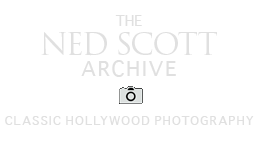Ned Scott’s favorite method of printing his negatives was to use platinum paper from the Platinotype Company in London. He felt that platinum paper was the truest representation of his negatives, and this was especially evident in the black tones in the images. Obtaining this paper was difficult as well as expensive. There was no representative or photo supply company…
Ned Scott was busy with his 5 x 7 Graflex while on assignment in Alvarado, Mexico for producer Paul Strand during filming of REDES/The WAVE in 1934. While not participating in film production, Ned Scott was free to roam the streets and shorelines of Alvarado with his camera. Among the many features he studied with his camera was the church…
Loepold Stokowski sent this letter to Ned Scott on September 10, 1934 while Scott was still in Alvarado filming REDES. Though there is no record what image Ned Scott sent to Stokowski which called forth the comment about Vera Cruz, one can surmise that Scott snapped a photo there before his final leg of his journey to Alvarado, 50 miles…
One of the first films which Ned Scott photographed for producer Walter Wanger was “Vogues of 1938” starring Joan Bennett and Warner Baxter. At that time, Ned Scott had been shooting films in Hollywood for two years. One of his new friends, Ralph Steiner of Frontier Films in New York, wrote him about a mutual friend who wrote articles for…
Martin Scorsese, through the World Cinema Foundation, has restored the 35mm film REDES which has been a cult favorite in art houses over the intervening 76 years since its release in 1936 in Mexico. This cultural protest film, one of the first of its kind in Mexico, features several firsts beyond the simple genre statement. It was the first major…
A personalized Janis Carter photo by Ned Scott dramatically illustrates the vast difference between Ned Scott’s own personal prints and the prints created by the photographic labs at Columbia Studios. These lab-made prints were often made at night from negatives created the day before, and they served a number of important and specific purposes for the Hollywood film making industry.…
This John Wayne photo from John Ford’s classic portrayal of Eugene O’Neill’s “The Long Voyage Home” demonstates the lasting brilliance of carbon prints. This film, produced by Walter Wanger, was the first Hollywood film to employ recognized artists to capture scenes from the movie’s production. Ned Scott, being the still photographer on the movie, photographed this Ernest Fiene painting of…
The Rudolph M. Schindler house for Henwar Rodakeiwicz was designed and built in 1937. This house was located on Alto Cedro Drive in Beverly Hills, California. Schindler was known for his innovative use of space, light and form. Henwar likely chose him to design his house because Henwar, being first and foremost a photographer like Ned Scott, Paul Strand and…
This Charles Vidor photo emphasizes a key fact of life in the studios–and indeed everywhere–and that was smoking. It was a cultural statement for the times. Ned Scott was a steady smoker, but not a “chain” user. He appreciated the social aspects of smoking, and that’s what’s on display here in this Charles Vidor photo. This is Ned Scott’s way…
This William Wellman photo taken by Ned Scott for “The Story of G. I. Joe” captures the creative energy on display for the making of this epic WWII film. The film depicts the life of renowned War Correspondent Ernie Pyle during his assignments in Europe to cover the progress of the war from the soldier’s point of view. The film…
